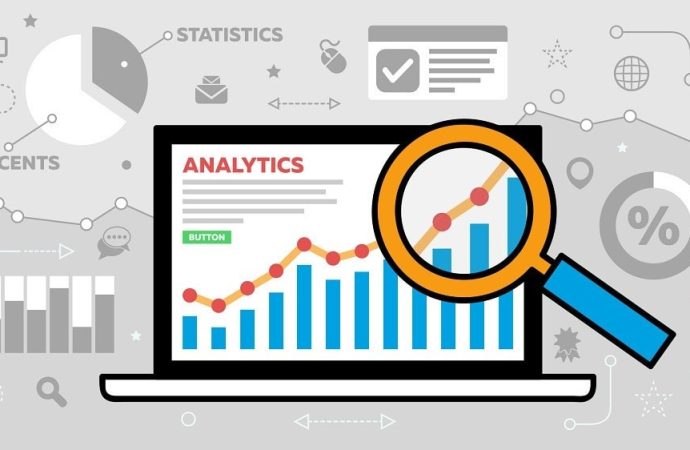In the ever-evolving landscape of digital communication, social media platforms have emerged as pivotal channels for content distribution. As we delve into the current trends shaping this space, it becomes evident that the strategies and technologies driving content dissemination are rapidly transforming, influenced by shifts in consumer behavior, technological advancements, and platform-specific algorithms. This article
In the ever-evolving landscape of digital communication, social media platforms have emerged as pivotal channels for content distribution. As we delve into the current trends shaping this space, it becomes evident that the strategies and technologies driving content dissemination are rapidly transforming, influenced by shifts in consumer behavior, technological advancements, and platform-specific algorithms. This article explores the key trends in social media for content distribution, focusing on algorithmic changes, video content, influencer marketing, ephemeral content, personalized content, and social commerce.
Algorithmic Changes
One of the most significant factors influencing content distribution on social media is the continuous modification of platform algorithms. Platforms like Facebook, Instagram, and Twitter have shifted from chronological content displays to algorithms prioritizing content based on user engagement and relevance. This change compels content creators and marketers to focus on quality and engagement rather than mere posting frequency. Understanding and adapting to these algorithms is crucial for enhancing content visibility and engagement rates. For instance, Instagram’s algorithm tends to favor posts that generate a lot of interactions in the form of likes, comments, and shares shortly after posting, which can amplify a post’s reach.
Video Content
Video content continues to dominate social media, driven by its high engagement rates and preference by platform algorithms. Platforms such as YouTube, TikTok, and Facebook have seen a surge in video consumption. The introduction of Instagram Reels and the expansion of TikTok highlight the growing importance of short-form video content. These platforms provide tools that allow creators to produce high-quality videos directly from their mobile devices, making video content more accessible and easier to distribute. Moreover, live streaming has gained traction as a real-time engagement tool, with platforms like Twitch and Facebook Live becoming central to many digital strategies.
Influencer Marketing
Influencer marketing remains a robust method for content distribution on social media. Influencers with large and dedicated followings can significantly amplify brand messages and reach targeted audiences effectively. The trend is shifting towards partnering with micro and nano-influencers, whose audiences, while smaller, often boast higher engagement rates and niche focus. This shift is partly due to the perceived authenticity and trustworthiness of smaller-scale influencers, making them valuable partners for brands looking to establish credibility and detailed market penetration.

Picture by: Yandex.com
Ephemeral Content
Ephemeral content, which includes stories that disappear after 24 hours, continues to be popular on platforms like Snapchat and Instagram. This content type caters to the user’s desire for authenticity and immediacy, encouraging more spontaneous and frequent interactions. The temporary nature of ephemeral content helps in creating a sense of urgency, prompting quicker audience responses and fostering a personal connection with the audience. Brands and content creators use ephemeral content to offer behind-the-scenes glimpses, limited-time offers, and live event coverage, enhancing user engagement and loyalty.
Personalized Content
The push towards personalized content is becoming increasingly prevalent on social media platforms. Advanced algorithms and data analytics enable brands to tailor their content to meet the specific tastes and preferences of their audience segments. Personalization can significantly increase content effectiveness by ensuring that the right messages reach the right audience at the right time. Platforms like Facebook and Instagram offer sophisticated targeting tools that allow for detailed audience segmentation, from demographic data to user behavior and interests.
Social Commerce
Social commerce is a rapidly growing trend where social media platforms are used as direct channels for commercial transactions. Platforms like Instagram and Pinterest have introduced features like shoppable posts, where users can purchase products directly from a post or an ad. This integration of e-commerce into social media not only streamulates the shopping experience but also allows for seamless content distribution that directly drives sales. As social commerce continues to evolve, it is expected to become a major revenue stream for brands and a regular component of social media platforms.
Conclusion
The landscape of social media for content distribution is characterized by dynamic changes and continuous innovation. Staying abreast of these trends—algorithmic changes, video content, influencer marketing, ephemeral content, personalized content, and social commerce—is essential for marketers and content creators aiming to optimize their strategies and achieve maximum impact. As social media platforms evolve, so too must the approaches to content creation and distribution, always with an eye toward engaging and expanding audiences in meaningful ways.
















